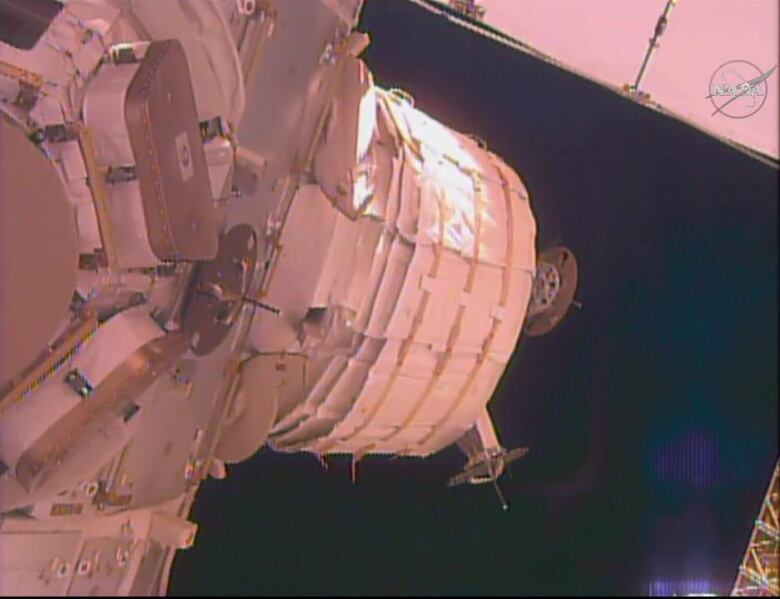NASA hits snag while inflating new room at space station
NASA paid Bigelow Space $17.8 million US to test Bigelow Expandable Activity Module (BEAM)

Mission Control ordered astronaut Jeffrey Williams to call it quits after the operation had dragged on for more than two hours, with the compartment barely expanding just a few inches. The inflation process could resume as early as Friday, depending on what engineers learn.
"Thanks for all your patience today, and we'll hope for better luck tomorrow," Mission Control radioed.
"That's space business," Williams replied.
It was supposed to take barely an hour for the commercial test chamber known as BEAM the world's first inflatable room for astronauts to swell four times in volume.

Everything went smoothly at first as Williams briefly opened a valve, allowing air to slowly flow into BEAM, short for Bigelow Expandable Activity Module. He did that four more times before Mission Control told him to stop because the room had barely inflated.
Troubleshooting from Houston
After a lengthy pause and another try, NASA called the whole thing off and engineers huddled at Johnson Space Center in Houston to try to figure out why BEAM hadn't expanded properly.
The operation must be conducted in daylight, with solid communications with Mission Control.
BEAM is the creation of Bigelow Aerospace, founded by hotel entrepreneur Robert Bigelow. NASA paid the North Las Vegas company $17.8 million to test the inflatable-habitat concept at the space station.
The soft-sided, multi-layered Beam measured 2.1 metreslong and nearly 2.4 metresin diameter when delivered last month to the station by SpaceX, packed in the trunk of a capsule loaded with supplies.
When fully expanded, the compartment should exceed 4 metresin length and 3.2 metresin diameter. That's the beauty of inflatable spacecraft; they can be packed tightly for launch, then expand and provide lots of room once aloft.
Bigelow Aerospace hopes to launch even bigger inflatable habitats in the future for use by tourists orbiting Earth, as well as professional astronauts bound for Mars.
Williams and his five crewmates aren't allowed to go inside the empty BEAM until a week after it is fully inflated, so ground controllers can check for leaks. Except for when astronauts go in to take measurements every few months, the hatch will remain sealed.
BEAM is supposed to stay attached to the space station for two years.












_(720p).jpg)


 OFFICIAL HD MUSIC VIDEO.jpg)
.jpg)



























































































